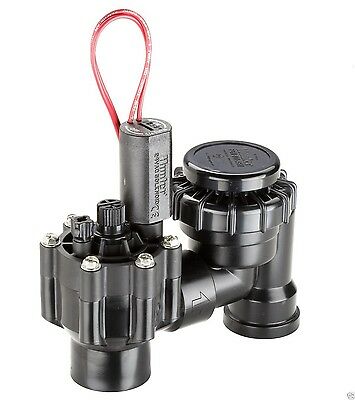All You Need to know about Anti-Siphon Valve (ASV)
What is Anti-Siphon Valve (ASV)
The anti-siphon valve, or ASV, is a manual or automatic control valve backflow prevention device that has a built-in atmospheric vacuum breaker. ASVs are the most common type of backflow preventer valves used in residential irrigation systems. Generally, ASVs are installed in groups of one or more, at the highest point in the area of irrigation. They are used in low-hazard applications where ASVs prevent the water from siphoning back to the main water supply system. They prevent the backflow of non-potable liquids from entering the clean water supply through faucets or showerheads.
How does it work?
The ASV works by using a small air vent located at the downstream of the actual valve of the system. It has a large-cap located directly above its water outlet. Under this cap, the air vent is located that are holes or slits to allow air to move in and out of the vent. When ASV is turned off, the pressure inside the downstream pipes in the system drops, and the remaining water flows out of the sprinkler. As the pressure gradually decreases, the air vent opens so that air goes inside the pipe and breaks any siphon effect produced (anti-siphon). This ensures that the sprinkler water cannot be drawn back into the potable water supply system.
Features of ASV
ASVs are heavy-duty solenoids that have a captive plunger with a PVC and stainless steel structure. It has a flow control feature with internal as well as external bleed with rigid diaphragm support. Its bottom must be installed 6 inches above any sprinkler heads or drip emitters it operates. Thus, it must be installed above ground as it cannot be submerged inside water. If you plan to use ASV, each one of your drip or sprinkler control valves must also be an ASV. If any other valve is used, the ASV can be damaged and will not prevent the backflow. Therefore, ASVs cannot be installed in the upstream of another valve, for instance, the zone control valve.

How is it different than other Backflow Preventers?
The ASV like the AVB assembly must be installed 6’’ higher than the highest drip emitter outlet or sprinkler head in the system. ASVs are essentially valves that have a built-in ackflow preventer inside them or have an SRV valve with an anti-siphon vent added. Unlike PVB, the flow control on this valve is a bit complex to use. The ASV is a testable backflow preventer valve, unlike AVB which is non-testable. It cannot be used continuously for more than 12 hours like other backflow preventers. Both ASV and PVB are used only for back- siphonage, however, their applications differ. ASV is mainly used for irrigation purposes, intended for both residential and light commercial usage.
Why is ASV a good option for Backflow Prevention Service?
ASVs have a shut-off capability which makes it easier to repair. When ASVs are tested, the shut-off capability allows the whole system to remain intact without any disturbance. This advantage makes it very convenient to use especially when the waters supply in constant usage in the home or commercial area. These also have an internal scrub mechanism that makes it easy to clean and prevents the plumbing from clogging.
We use ASV devices that meet the requirements laid out by the American Water Works Association (AWWA) Standard for Anti-Siphon Valve (IAPMO, ASSE 1001) and approved by labs sanctioned by the Conference of State Sanitary Engineers.
At smart water backflow, our mission is to offer the best water backflow services, installation services as well as repair services to help solve all your backflow problems. Call us now for booking.
